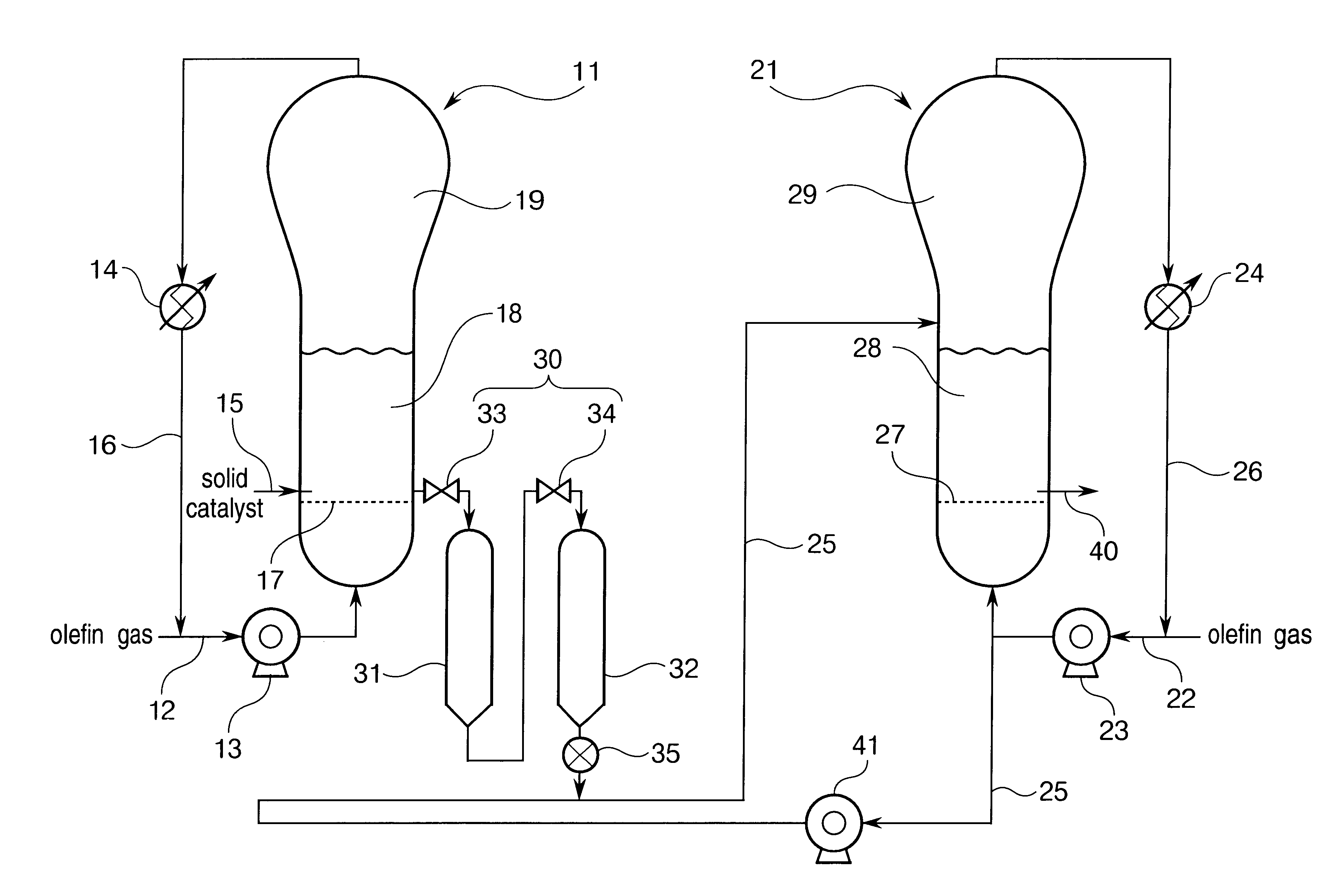Processes for producing polyolefin composition
- Summary
- Abstract
- Description
- Claims
- Application Information
AI Technical Summary
Benefits of technology
Problems solved by technology
Method used
Image
Examples
examples 1 to 5
, Comparative Examples 1, 2
Ethylene and 1-hexene were copolymerized in the first fluidized bed reactor and the second fluidized bed reactor of the polymerization apparatus having two fluidized bed reactors as shown in FIG. 1.
A catalyst system composed of zirconocene and methylalumoxane was fed to the first fluidized bed reactor. The copolymer obtained in the first fluidized bed reactor was introduced together with an accompanying gas into the second fluidized bed reactor via a transport line (transport line 25 in FIG. 1). In the case of polymerization in the second fluidized bed reactor, it was conducted in the presence of the copolymer obtained in the first fluidized bed reactor.
The polymerization was conducted continuously, after the polymerization vessel reached to equivalent condition as shown in Table 1. The feeding amount of 1-hexene was so appropriately controlled that a copolymer having the density shown in Table 1 was obtained.
As the saturated aliphatic hydrocarbon, isopent...
PUM
| Property | Measurement | Unit |
|---|---|---|
| Linear density | aaaaa | aaaaa |
| Linear density | aaaaa | aaaaa |
| Angle | aaaaa | aaaaa |
Abstract
Description
Claims
Application Information
 Login to View More
Login to View More - R&D
- Intellectual Property
- Life Sciences
- Materials
- Tech Scout
- Unparalleled Data Quality
- Higher Quality Content
- 60% Fewer Hallucinations
Browse by: Latest US Patents, China's latest patents, Technical Efficacy Thesaurus, Application Domain, Technology Topic, Popular Technical Reports.
© 2025 PatSnap. All rights reserved.Legal|Privacy policy|Modern Slavery Act Transparency Statement|Sitemap|About US| Contact US: help@patsnap.com


